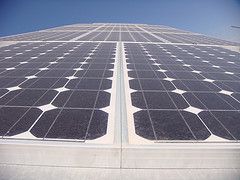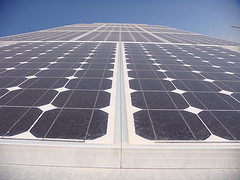Integrating smart tech into UK national grid
A new smart grid gets the green light as part of an agreement to ensure that renewable energy connected to the UK National Grid will meet 2020 renewable targets.

 A new smart grid gets the green light as part of an agreement to ensure that renewable energy connected to the UK National Grid will meet 2020 renewable targets.
A new smart grid gets the green light as part of an agreement to ensure that renewable energy connected to the UK National Grid will meet 2020 renewable targets.
The smart grid – a web of intelligent, flexible, high-tech components, including networks, microprocessors, and digital sensing technologies – is being increasingly adopted globally. It has provided increased efficiency for home appliances in the US as well as supplying electric cars with wind energy in Ireland's Aran Islands.
Computers allow utilities to predict and manage energy demand and system capacity, with batteries and other storage mechanisms.
The Smart Grid Working Group, within the Electricity Networks Strategy Group (ENSG), has published A Smart Grid Vision as an industry led ambition for developing a Smart Grid in the UK.
The smart grid plans in discussion could signify an energy revolution for the UK, and demonstrates a positive impact on the UK economy as well as reaching climate change policy targets.
Developing a smart grid could enhance the current National Grid; giving it larger capacity and the ability to manage greater fluctuations in supply, while maintaining security of supply. It has the capacity to integrate renewable energy such as solar and wind.
A UK National Grid report (November 2010) revealed that renewable generation will increase from 4,950 megawatts (MW) to 31,950 MW by 2020, in light of a reform in industry rules in 2009. The "connect and manage" approach has resulted in renewable generation projects being offered earlier grid connection dates, with some being offered connection up to nine years earlier.
The assertions place the UK on track to meet 2020 renewable targets, which pose a requirement for 15 per cent of energy to come from renewable sources. The smart grid could help to reach this target.
The Smart Grid Vision project advocates not only renewable energy, but also nuclear and fossil fuel plants fitted with carbon capture and storage. The proposal would ensure that there would always be enough power to handle consumers' needs. Green Alliance states that the smart grid can open up the option of moving towards an energy system that is virtually entirely supplied through renewable energy sources.
The National Grid warned, however, that the industry will need to change dramatically for renewable energy targets to be met. In the UK's report to the European Commission (20th July), the Department of Energy and Climate Change (DECC) states that energy production in the UK has traditionally been based around fossil fuels and has not actively exploitated the renewable resources available.
National Grid Executive Director Nick Winser said the company will continue to work hard with all developers of renewable sources to stimulate more projects to come online.
The ENSG anticipates that smart grids will be recognised as a necessary hybrid solution to store and transmit renewable energy, which could also then save energy.
The National Grid offshore wind is a key area for the UK Government and will work to develop an offshore electricity grid. The smart grid could offer new technology and increased communications.
With the benefits of the smart grid, however, come risks concerning cyber security –data security and privacy, and risks to operational security of the network control and management systems.
DECC is currently undertaking work in conjunction with the Energy Networks Association (ENA) to review smart grid cyber-security risks.
DECC have devised a framework for countering any risks identified, which will prioritise actions, and may involve cultivating new standards. This work is due to be complete by February 2011. Author: Marianna Keen | Climate Action Image: theregeneration | Flickr






